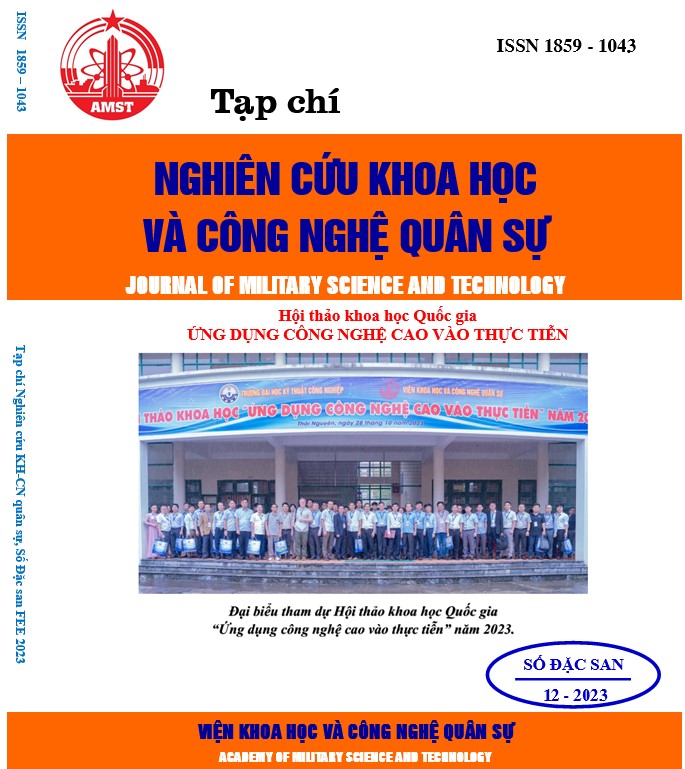Studying the effect of rolling and heat treatment on the organization and mechanical properties of QAl5 alloy after casting
484 viewsDOI:
https://doi.org/10.54939/1859-1043.j.mst.FEE.2023.238-244Keywords:
QAl5 alloy; QAl5 aluminium bronze; Rolling; Micro-forming.Abstract
In this paper, the influence of plastic deformation and heat treatment on the organization and mechanical properties of QAl5 alloy is studied. Alloy QAl5 has a fibrous structure obtained by smelting, rolling and heat treatment. Research results show that: (1) The structure of QAl5 alloy cast by metal mold is twin organization with coarse grain, average grain size over 500 μm and uneven size distribution. (2) Cast QAl5 alloy has good ductility but low strength, elongation is 65.3%, tensile strength is 237.7 MPa and yield strength is 65 MPa. (3) After 30% rolling and annealing treatment, the cast state twig organization turns into coaxial granules plus a small amount of twinning structure. As the annealing temperature increased from 700 °C to 850 °C, the average grain size increased from 25 μm to 125 μm, the grain size distribution became more uniform and at 800 °C a large elongation was achieved. 58.57%, yield strength increased over 46%.
References
[1]. Zhu J et al. “Development trends and perspectives of future sensors and MEMS/NEMS.[J]”. Micromachines, 11: 1-2, (2019). DOI: https://doi.org/10.3390/mi11010007
[2]. Hajare R, Reddy V, Srikanth R. “MEMS based sensors – a comprehensive review of commonly used fabrication techniques”. [J]. Materials Today: Proceedings, 49: 720-730, (2022). DOI: https://doi.org/10.1016/j.matpr.2021.05.223
[3]. Tan Y, Dong Y, Wang X. “Review of MEMS electromagnetic vibration energy harvester”. Journal of Microelectromechanical Systems, 26(1): 1-16, (2017). DOI: https://doi.org/10.1109/JMEMS.2016.2611677
[4]. Xu J et al. “A review on micro/nanoforming to fabricate 3D metallic structures”. [J]. Advanced Materials, 33(6): 2000893, (2021). DOI: https://doi.org/10.1002/adma.202000893
[5]. Dinh C et al. ”Effect of electroforming parameters on fatigue properties of copper-based planar microsprings”. Journal of Ordnance Industry, 37(7): 1252-1257, (2016).
[6]. Lv J et al. “Fabrication and mechanical characterization of cold extruded aluminum bronze planar microsprings”. Journal of Materials Engineering and Performance, 26(6): 2919-2927, (2017). DOI: https://doi.org/10.1007/s11665-017-2688-5
[7]. Lê Công Dưỡng “Vật liệu học”, Nhà xuất bản Khoa học Kỹ thuật Hà Nội, tr. 390, (1997).
[8]. Pradhan et al. “Influence of processing parameters on dynamic recrystallization and the associated annealing twin boundary evolution in a nickel base superalloy”. Materials Science and Engineering A, 700:49-58, (2017). DOI: https://doi.org/10.1016/j.msea.2017.05.109







